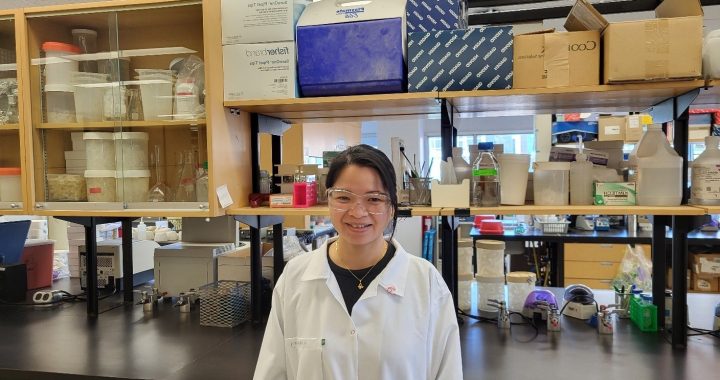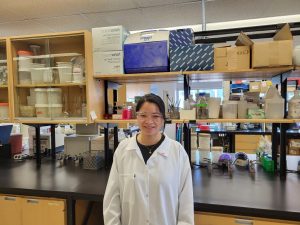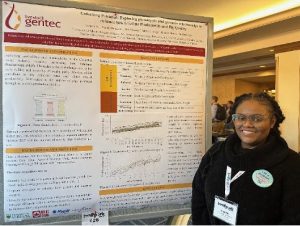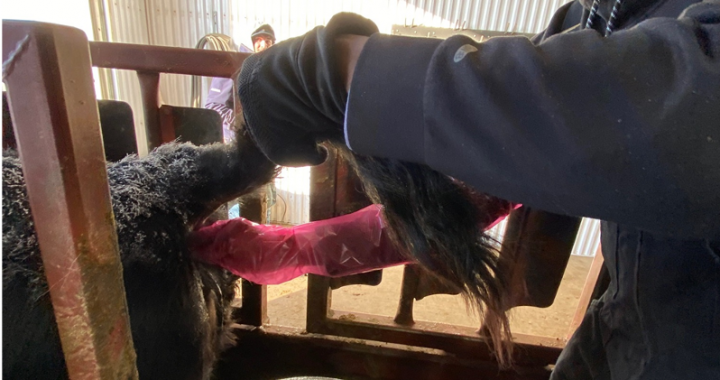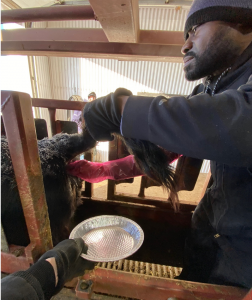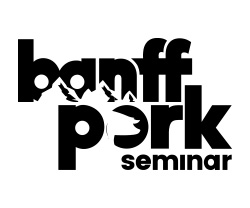Jordan Roberts, Tiago Valente, and John Basarab
Genomic tools can add value to your cow-calf breeding decisions, though genotyping has a cost. Your willingness to invest in genotyping will affect what information is available to you. However, there are ways you can apply genomic tools to add value to your herd over a range of investment levels. Livestock Gentec is a research centre of excellence at the University of Alberta with a goal of increasing adoption of genomic technologies by commercial livestock producers. As such, we think it is important for producers to understand more about genomic technologies, innovations in the field, and how to apply them. In this article, we discuss a few practical considerations for using genomic tools to improve the profitability of your herd and provide an update from the Livestock Gentec research group.
Using Hybrid Vigour to improve profitability
The genetic improvement of your herd can drive profitability. An important part of genetic progress is optimizing hybrid vigour. Put simply, hybrid vigour is the improvement in performance of hybrid offspring over the average performance of the parents. ‘Retained heterozygosity’ is a measure proportional to hybrid vigour, the formula considers the number and proportion of breeds contributing to the makeup of the individual to assign a value. This technical detail matters, as Basarab et al. (2018) found that each 10% increase in retained heterozygosity resulted in linear improvements to 200-d weaning weight (+3 lb), pregnancy rate (+2 percentage points), weaning rate (+3 percentage points), days in the herd (+51 days), and lifetime productivity (+79 lb over 5 parities). It is estimated that >40% of cows and calves in Canada would benefit from a 30% increase in hybrid vigour (Basarab et al. 2018). This means many commercial producers have a large opportunity to improve hybrid vigour and therefore profitability. To understand your opportunity for genetic improvement driven by the adoption of genomic tools, the ‘gold standard’ is to test each individual breeding bull and replacement heifer; however, a good low-cost alternative is testing a pooled DNA sample from a group of heifers.
Use of DNA pooling strategy can provide herd-level genomic breed composition and hybrid vigour. This is because there is a very strong relationship between measures from individual samples and DNA pooling for genomic breed composition (r=0.95 to 0.99) and hybrid vigour (r=0.99) (Valente et al., 2024, unpublished). This means a producer can benefit from accurate herd-level genomic breed information for a fraction of the cost. The pooling groups can be adjusted to optimize the cost benefit, as their “smart selection”, can turn this evaluation into actionable insight.
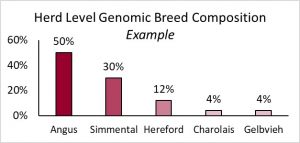
Caption: Report showing herd level genomic breed composition.
Individual Genotyping and Multi-Trait Selection Indexes
We can apply genomic tools with even more resolution by genotyping samples from all animals. When identifying individuals to genotype in your herd, we recommend the following prioritization: breeding bulls, replacement heifers and then cows/calves. This follows the potential for genetic improvement. With individual genotyping data, you can determine genomic expected progeny differences (gEPDs) in addition to genomic breed composition and hybrid vigour for all animals in the herd. These raw genomic values can be overwhelming as there can be many gEPDs. This is clarified by using an economic model to quantify the relationship between the gEPDs and net return or profitability; some gEPDs are related to profitability while others are not and are excluded from the index. Thus, a multi-trait selection index is the sum of economically relevant traits based on economically weighted gEPDs based on the associated gross income and cost of each trait. The Replacement Heifer Profitability IndexTM scores developed by Livestock Gentec also includes retained heterozygosity to help identifying the best heifers that should be kept in the herd with a higher probability of staying longer in the herd and producing more calves over their lifetimes. Having these index values on an individual level gives a profitability-based ranking of animals for herd management decisions such as breeding and heifer retention.
Research Update from Livestock Gentec
In addition to educating producers on currently available genomic tools, we also think it is important to be aware of innovations in the field. Below are two projects the Livestock Gentec team are working on to further genomic technologies in beef.
Using genomics to improve the profitability and sustainability of Alberta’s beef industry. The aim of this project is to increase adoption of genomic tools in the industry and evaluate the effectiveness of these multi-trait selection indexes (e.g., Feeder Profitability IndexTM; Replacement Heifer Profit IndexTM ) with a large producer representation. Gentec is increasing the size of the reference data sets to enhance accuracy of gEPDs. To grow these data sets we are enrolling producers willing to share records from their herds, as well as to genotype their animals. Participants get access to steeply discounted genotyping and a detailed report including the genomic values discussed above. See more details below on how to participate. This project is cost-shared by the federal and provincial governments under the Sustainable Canadian Agricultural Partnership and is led by John Basarab as Principal Investigator.
How to participate:
- KEEP COW BASED RECORDS – cow ID – entry date – cull date & reason – calf data each year
- Have a DNA testing strategy
- Contact Livestock Gentec at 403-660-4155; lsgentec@ualberta.ca
- Request sample submission form and arrange for Tissue Sampling Units (TSUs) & applicator
- Pay $20/sample, with project funding paying for the other $32/sample
- Received all genomic breed composition, hybrid vigour score, MBVs, FPITM, RHPITM, easy to read reports and access to 100k SNP genotypes
- Work with Livestock Gentec to receive the most value from your data


Caption: (Left) learn more about Livestock Gentec’s genomic tools; (right) Sample submission form.
Reducing Greenhouse Gas Emissions from the Canadian Beef Industry through the Development and Adoption of Genomic Tools. One of the aims of this project is to evaluate fecal near-infrared spectroscopy as a low-cost proxy for measuring methane production in commercial cattle. The project will also measure methane emissions, feed intake and feed efficiency while taking many fecal samples from about 1900 beef cattle from various locations in Canada, though most will be in Alberta. In this project we will develop DNA based multi-trait selection index for cow-calf producers to reduce GHG emissions from their herd, while improving their profitability. As well, we will develop a carbon offset protocol so that cow-calf producers are incentivized to implement best management practices, like genomic selection for improved feed efficiency and reduced methane emissions, to reduce their herd-level GHG intensity of beef production. This project is funded by a NSERC-SSHRC Sustainable agriculture research initiative grant awarded to John Basarab as Principal Investigator.

